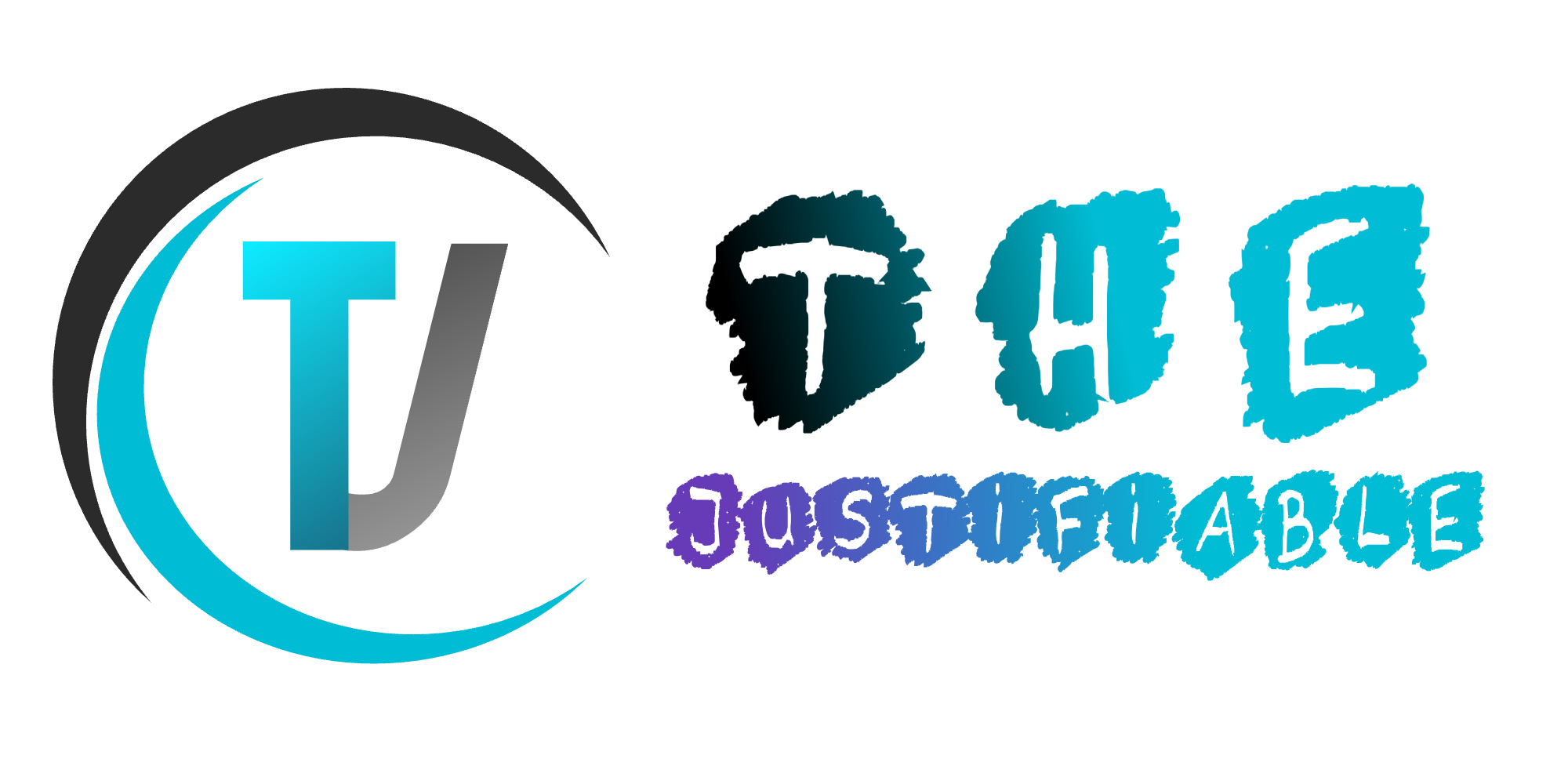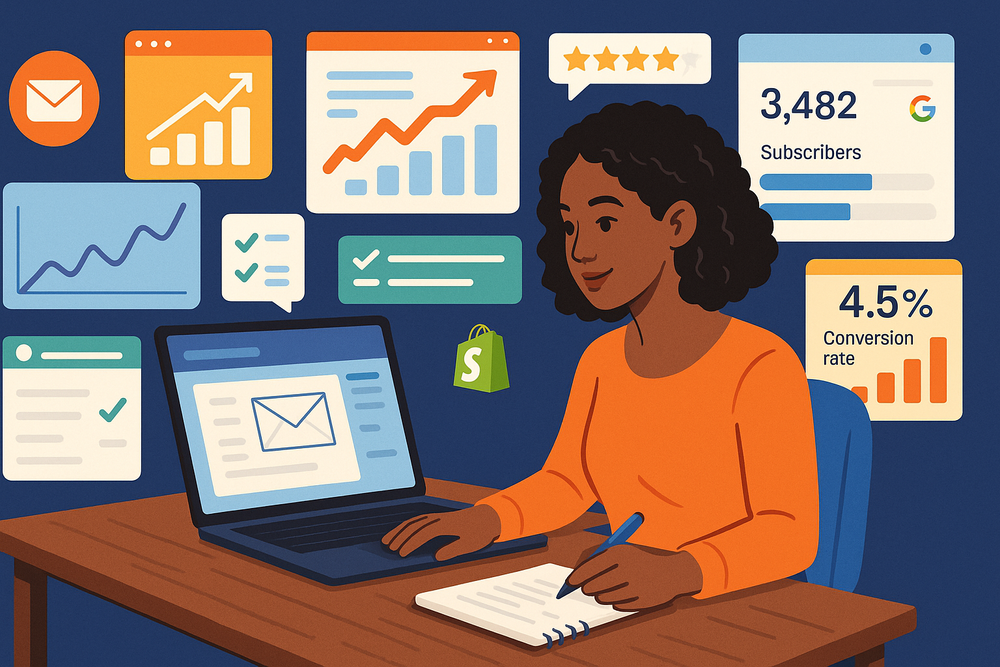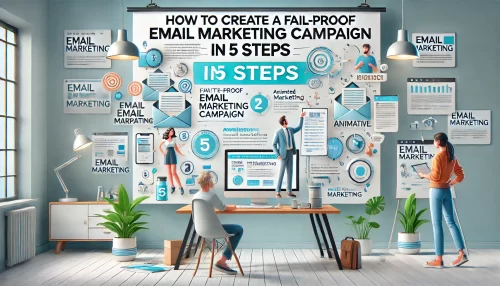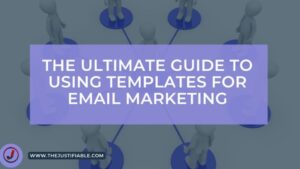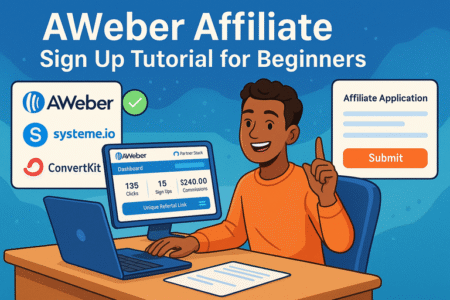Table of Contents
Newsletter marketing isn’t just about hitting “send” and hoping for the best—it’s about creating a connection that turns subscribers into loyal customers.
But how do you actually do that? What makes someone open your emails, click through, and take action? And how can you consistently improve your conversions without overwhelming your list?
If you’ve been sending emails but not seeing results, or if you’re just getting started and want to do it right from the beginning, this guide will walk you through everything you need to know. Let’s break down exactly how to master newsletter marketing so your emails not only get noticed—but actually convert.
Build A High-Converting Newsletter Strategy From Day One
Before you write a single email, you need a strategy that turns casual readers into loyal customers. This section will help you set a foundation that leads to higher conversions right from the start.
Craft a Clear Value Proposition That Hooks Subscribers
If someone lands on your signup form, you’ve got seconds to answer one question: What’s in it for me?
Your value proposition should explain exactly what a subscriber will get, how often, and why it matters to them. Generic promises like “Get updates” or “Join our list” don’t cut it. Instead, speak directly to your reader’s pain points or goals.
Here’s how you can make your value proposition more magnetic:
- Focus on one benefit they truly care about.
- Use simple, benefit-driven language like “Get weekly tips to grow your online store.”
- Make it time-sensitive or exclusive if possible (e.g., “Join now for early access to product launches.”)
I’ve seen this small tweak double signup rates. When your value proposition is sharp, people don’t need convincing—they just need a form to fill out.
Choose the Right Newsletter Format Based on Your Audience
Your audience should shape how you deliver content. A tech-savvy startup crowd might love curated industry updates, while a lifestyle audience may prefer story-driven emails or product roundups.
Let me break it down for you with a few examples:
- Digest or roundup newsletters: Great for niche blogs, ecommerce, or content-heavy brands. Keep it skimmable with headlines and short blurbs.
- Single-topic newsletters: Ideal for tutorials, thought leadership, or service-based businesses. Focus on one idea or action.
- Automated sequences: Perfect for onboarding, nurturing, or education-focused content.
Pick a format that aligns with your audience’s habits, and don’t be afraid to test variations early on.
Set Conversion-Driven Goals for Every Campaign
A campaign without a goal is just noise. Whether you’re driving traffic to a blog, pushing a product, or inviting feedback, you need a measurable objective.
Ask yourself:
- What action do I want the reader to take?
- How will I measure success—click-throughs, purchases, replies?
Use that goal to reverse-engineer your campaign. For example, if your goal is to sell a product, structure your emails around benefits, social proof, urgency, and a clear call to action. Track conversions using UTM codes or email platform analytics.
Clear goals not only guide your writing but also help you measure what’s actually working.
Align Email Content With the Customer Journey
Not every subscriber is ready to buy. Some are just getting to know you, while others are one step away from checkout. Tailoring your emails to where they are in their journey can dramatically improve conversions.
Let’s map it out:
- Top of Funnel: Share value-packed content, free resources, or welcome emails to build trust.
- Middle of Funnel: Introduce case studies, product benefits, or common objections.
- Bottom of Funnel: Offer discounts, testimonials, or direct purchase links.
I suggest building sequences that guide subscribers from curious to converted—without pushing too hard too early. When your content meets them where they are, it becomes more relevant and persuasive.
Design Irresistible Lead Magnets That Drive Signups

You can’t build a newsletter audience without something worth subscribing for. That’s where lead magnets come in. This section walks you through designing lead magnets that pull the right people into your funnel.
Match Lead Magnet Format to Subscriber Pain Points
The best lead magnets solve a specific problem for your ideal subscriber. It’s not about being flashy—it’s about being useful.
Here are formats that work well:
- Checklists: Quick, actionable, and easy to digest (great for productivity or step-by-step guides).
- Mini-courses: Excellent for service providers, coaches, or educators who want to build authority.
- Templates: Time-saving tools for creators, marketers, or business owners.
- Discounts: Highly effective for ecommerce and product-based businesses.
Choose a format that removes friction or fast-tracks results. When your lead magnet feels like a shortcut to success, people can’t resist.
Test Placement and Design for Higher Opt-In Rates
Even the best lead magnet won’t work if no one sees it. Where and how you present it makes a massive difference.
Here’s what I’ve seen work well:
- Popups that trigger on exit intent or scroll percentage.
- Inline opt-in forms placed inside blog posts, especially high-traffic or evergreen ones.
- Sticky bars or slide-ins that offer your lead magnet without interrupting the flow.
- Dedicated landing pages that remove distractions and focus on conversion.
Also, test the copy around your form. Simple changes like swapping “Sign up” for “Get my free checklist” can increase conversions by 20% or more.
Segment Lead Magnets to Attract Qualified Leads
Generic offers attract generic lists. If you want subscribers who convert, segment your lead magnets based on specific interests or behaviors.
Let me show you what that looks like:
- Offer one lead magnet for ecommerce tips and another for social media growth.
- Use tags in your email platform to track which lead magnet someone downloaded.
- Send targeted welcome sequences based on their interest.
This sets the stage for personalized follow-ups and smarter automation. It also improves the experience for the reader—because they’re only getting content they actually care about.
Use Behavioral Triggers to Deliver Lead Magnets Instantly
When someone signs up, the delivery email should land in their inbox immediately. That moment is when they’re most engaged—and most likely to open future emails.
Here’s how to make it seamless:
- Use your email platform’s automation to trigger the delivery email the second they opt in.
- Reconfirm the value of the lead magnet in your email with a short, personal message.
- Include a CTA in the delivery email (e.g., read a related blog post, follow you on social, or reply with a question).
In my experience, this is a prime moment to build trust. If the lead magnet is good and the delivery smooth, you’ll be miles ahead in earning their attention going forward.
Write Subject Lines That Demand Opens
A great subject line is like the headline of your entire email strategy—it determines whether your newsletter gets opened or ignored. Getting this right is the first real step to better newsletter marketing results.
Use Curiosity, Urgency, and Relevance to Stand Out
If your subject line doesn’t make someone stop scrolling, you’ve already lost. Curiosity, urgency, and relevance are powerful tools when used with intention. But the trick is balance—you want to tease, not mislead.
Here are a few proven angles to experiment with:
- Curiosity: “You won’t believe what happened after Day 3…” — prompts a click to resolve the unknown.
- Urgency: “Only 4 hours left—this changes tomorrow.” — gives a reason to act now.
- Relevance: “Struggling with low open rates? Fix it with this tweak.” — speaks directly to a problem your reader is facing.
Always write as if you’re speaking one-on-one. The most compelling subject lines don’t sound like ads—they sound like real people.
A/B Test Subject Lines to Learn What Converts
Writing one strong subject line is great—but testing two is even better. A/B testing takes out the guesswork and helps you learn exactly what your audience responds to.
Let me break down a simple approach:
- Test length: Short subject lines often perform better on mobile.
- Test tone: Try a casual tone versus something more formal.
- Test structure: Question vs. statement, emoji vs. none, capitalization styles.
Once you send out enough tests, look at the trends. Do questions work better than statements? Are list formats outperforming open-ended ones? Save your top performers in a swipe file so you’re not starting from scratch every time.
Avoid Spam Triggers While Keeping It Compelling
You want your subject line to stand out—but not in the spam folder. Spam filters look for patterns and phrases that sound promotional or suspicious.
A few things to steer clear of:
- Words like “Free!!!” “Buy now,” or “Make $$$”
- Excessive punctuation or ALL CAPS
- Overuse of symbols like %, $, or emojis
Instead of sounding pushy, aim for helpful. Use real language that sets an expectation for value. I’ve found that subject lines promising a takeaway or answering a common question consistently outperform louder, hype-driven ones.
Personalize Subject Lines Without Overdoing It
Personalization can boost open rates—if it’s done naturally. Including a first name might work in some cases, but it’s not the only (or best) option.
Here are subtler ways to personalize:
- Refer to their last action: “You downloaded this—now what?”
- Use behavioral data: “Still thinking about that checklist?”
- Segment by interest: “SEO tips for ecommerce store owners”
Overdoing it can feel robotic or intrusive. Keep it simple and authentic—like a thoughtful nudge from someone who actually knows what the reader cares about.
Master Email Copywriting That Converts Readers to Buyers
You’ve earned the open—now it’s time to deliver. Email copy is where you either lose momentum or turn curiosity into clicks, and eventually into conversions. A strong message with clear structure makes all the difference.
Structure Emails With One Clear Call to Action
If there’s one mistake I see too often, it’s stuffing emails with too many links and conflicting actions. When readers are unsure what to do next, they often do nothing.
Here’s how to simplify:
- Decide on one goal for the email (click, reply, buy).
- Place your main CTA above the fold, and repeat it once later.
- Use directional cues—like arrows, buttons, or bolded phrases—to guide the reader.
Treat your CTA like the destination, and the rest of your copy as the map that gets them there.
Tap Into Emotion, Storytelling, and Reader Intent
Facts tell. Stories sell.
If you can speak to the emotional side of your reader—whether it’s relief, excitement, or even fear of missing out—you’ll keep them engaged longer. I often start an email with a relatable story or specific moment that sets the tone.
Some quick ways to do this:
- Start with a true or hypothetical story that reflects their struggle.
- Use emotional language that mirrors how they talk about their problem.
- Present your offer or solution as the natural next step in that journey.
The more your copy feels human, the easier it is to connect—and convert.
Use Social Proof and Specifics to Build Trust
People don’t want to be the first to try something. Social proof gives them the confidence to act.
Here are forms that work well in emails:
- A short testimonial: “This guide helped me grow my list by 300%.”
- Mentioning user numbers: “Over 12,000 subscribers use this tool daily.”
- Screenshots or links to positive reviews
Specifics also matter. Instead of “Our tool helps you grow faster,” say, “See how 3 automations helped Sarah cut her email time in half.” Tangible details are more persuasive than vague promises.
Make CTAs Action-Oriented and Visually Stand Out
A CTA isn’t just a button—it’s the bridge between interest and action. To make it work, focus on both language and design.
Some tips I use often:
- Use verbs: “Download the checklist,” “Start the free trial,” “See your report.”
- Make buttons large enough to tap on mobile.
- Leave space around the CTA so it’s easy to spot.
You can even experiment with microcopy beneath the button. Something like, “No credit card needed” or “Takes 2 minutes” removes friction and adds a subtle nudge.
Segment Your List for Laser-Focused Messaging

Segmentation is where newsletter marketing shifts from generic to genuinely helpful. Instead of blasting everyone with the same message, you send content that feels like it was written just for them.
Group Subscribers by Behavior, Not Just Demographics
It’s easy to group subscribers by basic info—like age, location, or job title—but behavior tells a deeper story. What someone clicks, downloads, or purchases says more about their intent than any form field.
A few behavior-based segment ideas to try:
- Click activity: Tag users based on links they click in your emails.
- Site behavior: Track product views or time spent on a particular page.
- Purchase patterns: Group by frequency, value, or product category.
Behavioral data allows you to act in real time. For instance, if someone clicks on a blog post about pricing but doesn’t buy, you can send a follow-up that addresses common objections.
Tailor Content to Past Purchases or Interests
Personalization isn’t just about saying someone’s name. It’s about sending relevant content based on what they’ve already shown they care about.
Let’s say you run an online course platform:
- Someone buys a course on SEO? Recommend advanced email marketing next.
- A reader signs up from a lead magnet about copywriting? Send a case study about successful sales pages.
Even a simple segmentation rule—like sending a different welcome series based on signup source—can boost engagement and conversions noticeably.
Use Dynamic Content Blocks for Personalization at Scale
Dynamic content allows you to show different parts of an email based on who’s receiving it. It’s like having one email template that changes itself depending on the reader’s preferences or actions.
Examples of dynamic content in action:
- Feature different products depending on what the reader browsed last.
- Show tailored CTAs based on where they are in your sales funnel.
- Swap headlines or images based on previous lead magnet downloads.
Most email marketing tools like ActiveCampaign, Aweber, or Moosend support dynamic blocks. Once you get the hang of it, it’s one of the easiest ways to scale personalization without doubling your workload.
Automate Targeted Campaigns for Each Segment
Automation becomes more powerful when paired with segmentation. Instead of sending the same campaign to everyone, you create paths that match where people are in their journey.
Here’s a flow that often works well:
- Trigger: User downloads a free resource.
- Segment: Tag them as interested in X topic.
- Campaign: A 4-part email sequence that nurtures them toward a paid product tied to that topic.
The key is making sure each campaign has a single focus and a logical next step. Think of it like building mini funnels that guide the right readers toward the right offer.
Automate Campaigns Without Losing the Human Touch
Automation saves time, but if it feels robotic, people tune out. The goal is to stay consistent while still feeling personal and thoughtful. That balance is what builds real relationships—and better conversions.
Set Up Welcome Series That Builds Trust Fast
The welcome series is your first impression, and it’s one of the most opened sequences you’ll ever send. This is where trust starts.
Here’s a simple 3-email structure I use often:
- Email 1: Thank them, deliver the lead magnet, and set expectations.
- Email 2: Share a personal story or reason behind your newsletter.
- Email 3: Offer value-driven content (a blog post, video, or tool).
The key? Keep it warm, authentic, and low-pressure. Focus on helping more than selling in this stage.
Map Out Drip Sequences That Guide to a Sale
A drip sequence walks someone through a journey—from awareness to purchase. But it should feel like a helpful guide, not a sales pitch on repeat.
Here’s how to structure a high-converting drip:
- Start with insight: Teach or solve something first.
- Build credibility: Use testimonials, stats, or proof.
- Introduce your offer: Make it clear how it solves a problem they have.
- Answer objections: Anticipate hesitations and respond with value.
Keep each email short, focused, and action-oriented. I like to build in light storytelling and examples to keep things human.
Blend Automation With Manual Broadcasts for Flexibility
Automations are great for consistent sequences, but manual broadcasts give you flexibility. You can share timely updates, react to trends, or launch new offers—all without disrupting your automations.
Some broadcast ideas that complement your sequences:
- A behind-the-scenes update or founder story.
- A timely content roundup or promotion.
- An ask for feedback or survey.
I like to alternate between automated nurture flows and live broadcasts to keep my list engaged without burning out on too many promotions.
Monitor and Tweak Automation Based on Behavior Data
Even well-built automations need tuning. Use your analytics to spot gaps, drop-offs, or bottlenecks.
Things to review:
- Open rates: Are people reading the emails?
- Click-through rates: Are they taking action?
- Conversion rates: Are they buying or signing up?
Tools like ConvertKit and Brevo let you see individual automation paths. If you notice a drop-off at email three, maybe the CTA is too early or the offer needs reframing.
Revisit these flows quarterly and test small tweaks to improve results without rebuilding everything from scratch.
Use Data and Analytics to Improve Conversion Rates
Guesswork has no place in effective newsletter marketing. Your numbers will always tell you what’s working—and where to fix things. The more you understand the data, the better your emails convert.
Track Open, Click, and Conversion Metrics Over Time
These are your three big metrics:
- Opens tell you if your subject lines are effective.
- Clicks show if your content or CTA is engaging.
- Conversions reveal if you’re meeting business goals (sales, signups, etc).
Look at trends, not just single campaigns. Are your opens declining? Are your clicks steady but conversions dropping? Patterns help you ask the right questions.
Use a spreadsheet or dashboard to compare performance monthly. Over time, you’ll get a clear picture of what “good” looks like for your list.
Identify Drop-Off Points in Your Email Funnel
A drop-off point is where people stop engaging. Maybe they opened the first two emails of a series, then nothing. That’s a clue.
Common drop-off causes:
- Overly aggressive selling early in the funnel.
- Long or confusing emails with unclear CTAs.
- Repetitive content or irrelevant offers.
Use email platform analytics to see open and click rates per email in a sequence. Then tweak or replace low performers with stronger hooks or clearer messaging.
Run Split Tests on Email Timing, Copy, and Layout
Split testing doesn’t have to be complicated. Start small:
- Subject line A vs. B
- Morning vs. evening sends
- Button CTA vs. text link
One test at a time gives you clean data. Don’t change multiple variables unless you’re running multivariate tests with large audiences.
Over time, even 5–10% improvements per test compound into significantly higher conversions.
Use Heatmaps and Scroll Tracking on Linked Pages
Sometimes the issue isn’t in your email—it’s in the landing page. Tools like Hotjar or Crazy Egg can show you where users click, scroll, or bounce.
With scroll tracking, you’ll see how far people read before leaving. If your CTA is below the scroll line, you may need to move it up.
Heatmaps also help validate assumptions. For example, if people click a product image instead of your button, maybe the button isn’t clear enough.
Pairing email data with page behavior gives you a complete view of your funnel.
Optimize Newsletter Design for Mobile Conversions

Most people read emails on their phones, not desktops. Optimizing your newsletter design for mobile isn’t just smart—it’s necessary for better conversions.
Prioritize Mobile-Friendly Layouts and Fonts
Mobile readers scroll fast. They don’t pinch or zoom to read small text or navigate wide layouts.
Here’s how to keep your design mobile-ready:
- Use a single-column layout that scales down cleanly.
- Choose fonts that are legible on small screens (14–16px minimum for body, 20px+ for headers).
- Keep paragraphs short—no more than 2–3 lines for mobile comfort.
I usually stick with responsive templates from platforms like MailerLite or ConvertKit, which automatically adjust layouts across screen sizes.
Reduce Load Time and Cluttered Elements
Emails that load slowly—or look cluttered—lose attention fast. Every second matters, especially on mobile.
Tips to streamline your design:
- Compress all images and keep total file size under 1MB.
- Limit animations, GIFs, or complex HTML that might lag on mobile.
- Stick to one main idea per email and remove distractions.
Less is often more. I’ve seen emails perform better simply by removing background images or trimming excess content blocks.
Test CTA Placement Across Device Types
Where your call-to-action sits can make or break conversions. On mobile, the “fold” happens much sooner, so CTAs buried at the bottom get lost.
Test these variations:
- Placing a CTA button above the fold (visible without scrolling).
- Using sticky buttons or repeating CTAs mid- and end-email.
- Ensuring buttons are large enough to tap with a thumb (at least 44×44 pixels).
You can use heatmaps or email click maps (tools like Litmus or Email on Acid) to see exactly where mobile users are clicking—or not.
Use Visual Hierarchy to Guide the Reader’s Action
Visual hierarchy helps your reader know what matters most. With just a glance, they should know what to focus on, where to scroll next, and how to take action.
Structure your hierarchy like this:
- Headline first, short and bold.
- Visual or supporting image.
- Short paragraph or bullet point benefits.
- CTA button with clear action language.
Spacing, color contrast, and font weight also guide the eye. I always test emails in dark mode too, just to ensure readability and brand consistency.
Retain and Re-Engage Inactive Subscribers Strategically
Inactive subscribers don’t always mean lost causes. With the right approach, many can be brought back—and sometimes become your best customers.
Create Win-Back Campaigns With Exclusive Offers
Sometimes all it takes is a fresh reason to re-engage. A win-back campaign gives lapsed subscribers something new to say “yes” to.
Effective tactics include:
- Limited-time discounts or loyalty perks.
- “We miss you” style emails with updated product features or content.
- An invitation to rejoin or update preferences.
I like to make this a short 3-email series spaced over two weeks. If they engage, re-tag them. If not, prepare to suppress or clean their record.
Survey Disengaged Subscribers to Understand Why
Rather than assume why subscribers went silent, just ask. A simple feedback form can reveal gaps in your content, frequency, or timing.
You can ask:
- What kind of content they want more or less of.
- Whether the emails felt too frequent or irrelevant.
- If there’s anything you can improve.
Tools like Typeform or Google Forms work well, and even a one-question email can spark helpful replies. Sometimes people just want more control.
Clean Your List Without Losing Valuable Data
A clean list improves deliverability, boosts open rates, and reduces costs. But don’t rush to delete—segment and gradually remove inactive contacts.
Steps I use:
- Identify inactive users (no opens/clicks in 90–180 days).
- Run a re-engagement series.
- Move non-responders to a suppression list before deleting.
This gives you one more chance to convert—and lets you preserve analytics or past engagement history if needed.
Let Subscribers Control Frequency and Content Preferences
Empowering subscribers to set their own rules reduces unsubscribes dramatically. When someone can control what they receive and how often, they’re more likely to stay.
Ideas to implement:
- A preferences center with topic and frequency options.
- A pause subscription button instead of immediate unsubscribe.
- Occasional check-in emails asking, “Still want to hear from us?”
In my experience, giving people the choice leads to fewer churns and more engaged subscribers long-term.
Comply With Email Laws While Maximizing Deliverability
Deliverability starts with trust—and legal compliance is part of that. When your emails respect privacy laws and maintain sender reputation, they’re far more likely to land in inboxes, not spam folders.
Follow GDPR, CAN-SPAM, and Global Email Regulations
It’s not just about avoiding penalties—following these laws builds trust. Transparency goes a long way in newsletter marketing.
Make sure you:
- Clearly disclose why someone is receiving your email.
- Include your physical address in the footer.
- Offer a working, one-click unsubscribe option.
For GDPR (Europe), make sure consent is active—not pre-checked. For CAN-SPAM (U.S.), avoid deceptive subject lines or misleading sender info.
Use Double Opt-In to Protect List Quality
Double opt-in asks subscribers to confirm their email address before they’re added to your list. While it adds one step, it improves list hygiene dramatically.
Benefits include:
- Fewer fake or mistyped email addresses.
- Higher engagement rates from the start.
- Better sender reputation over time.
It also protects against bots and accidental spam complaints, which can quietly destroy your deliverability behind the scenes.
Authenticate Domains and Monitor Sender Reputation
Authentication proves your emails are coming from you—not a spammer pretending to be you.
Set up these protocols:
- SPF: Tells email providers who’s allowed to send on your behalf.
- DKIM: Adds a digital signature to verify sender identity.
- DMARC: Monitors unauthorized use and improves enforcement.
Also, use tools like Google Postmaster Tools or Talos Intelligence to monitor your sender reputation and catch any issues early.
Avoid Blacklisted Words and Trigger Phrases in Emails
Spam filters scan your content for red flags—especially in subject lines and headers.
Common spammy phrases:
- “Act now!”
- “Risk-free”
- “Earn $$$”
- Overuse of all caps, exclamation points, or misleading urgency
Focus instead on conversational, value-driven language. Even your best-written newsletter won’t matter if it never reaches your reader.

